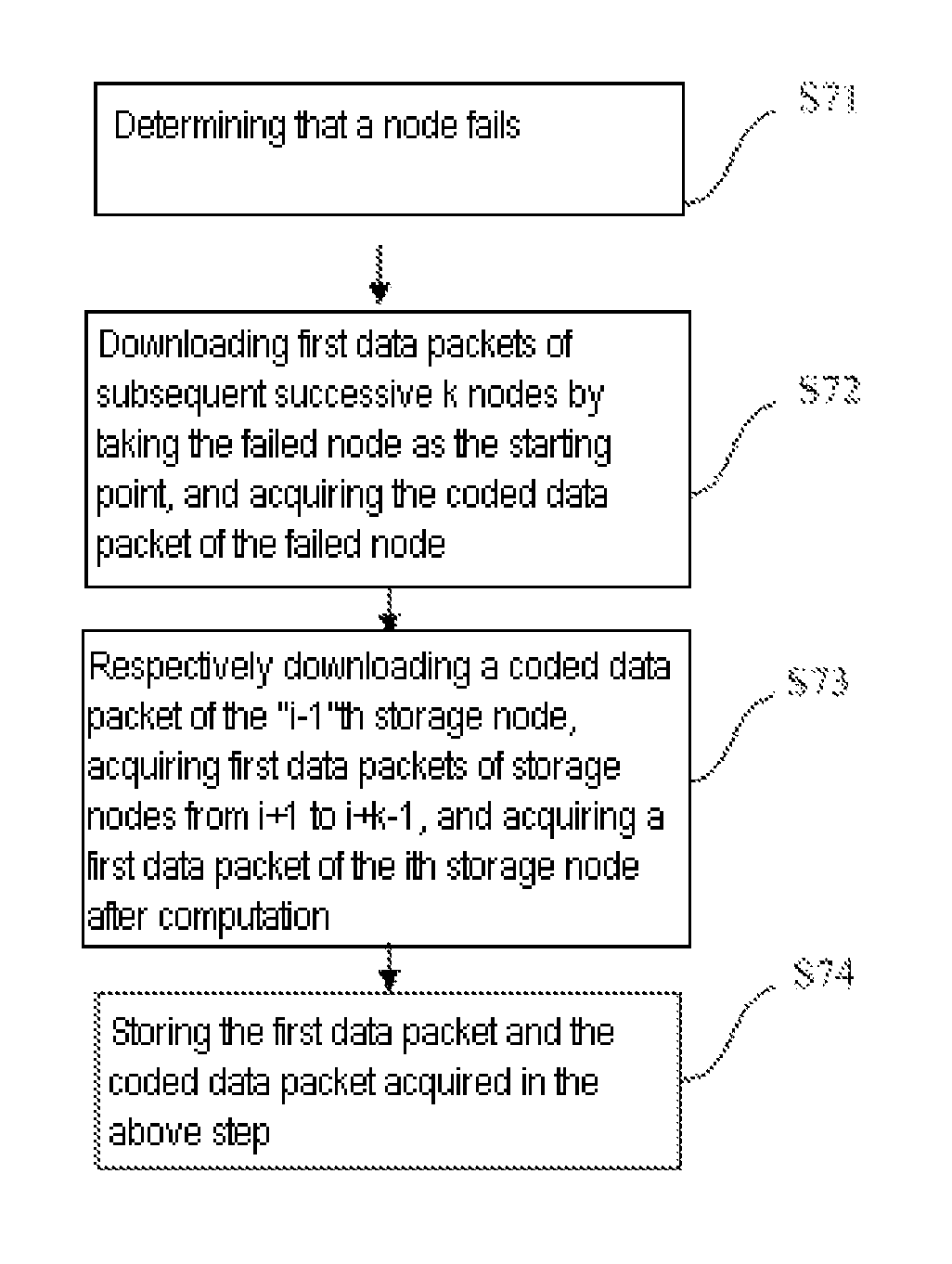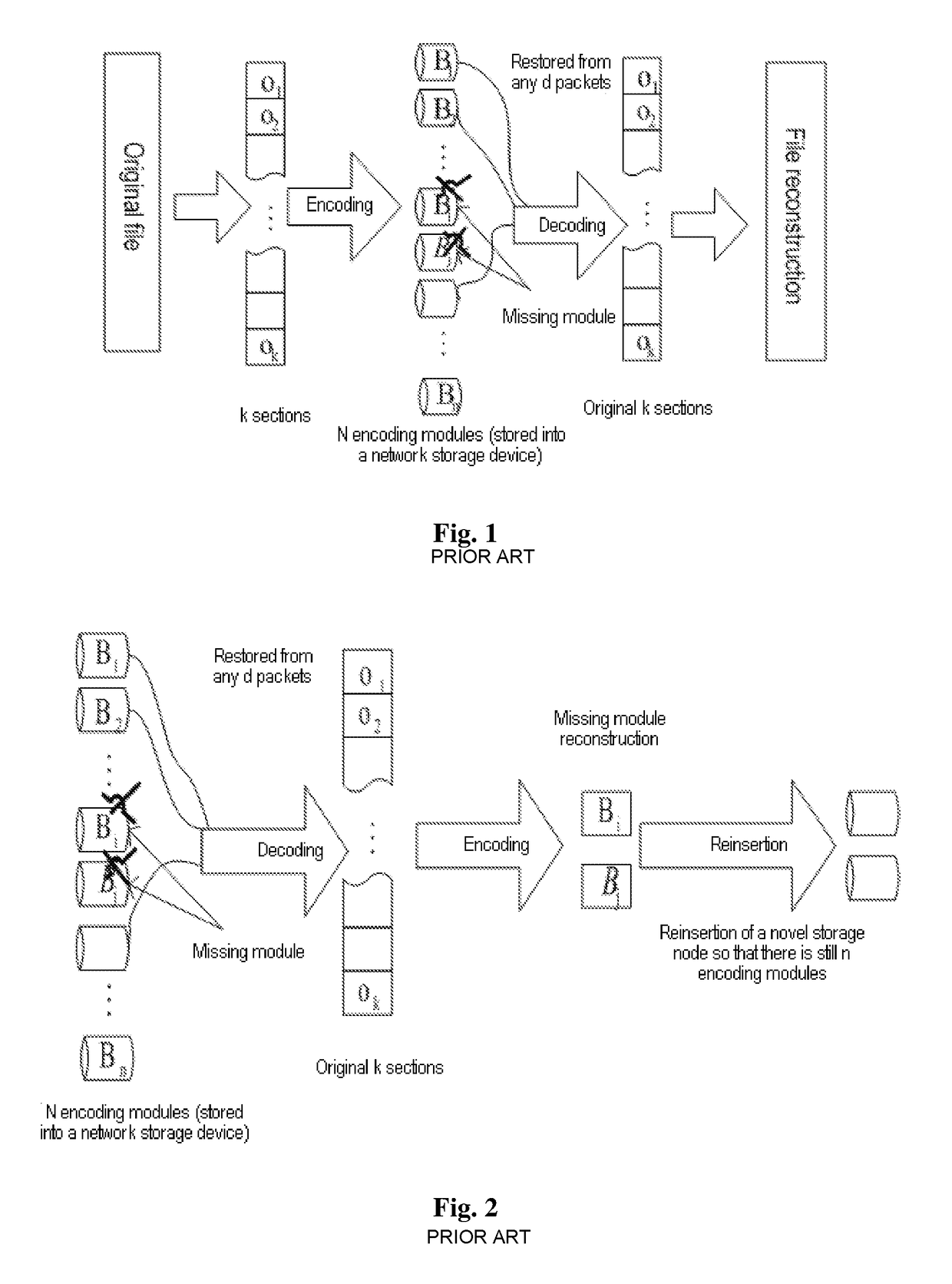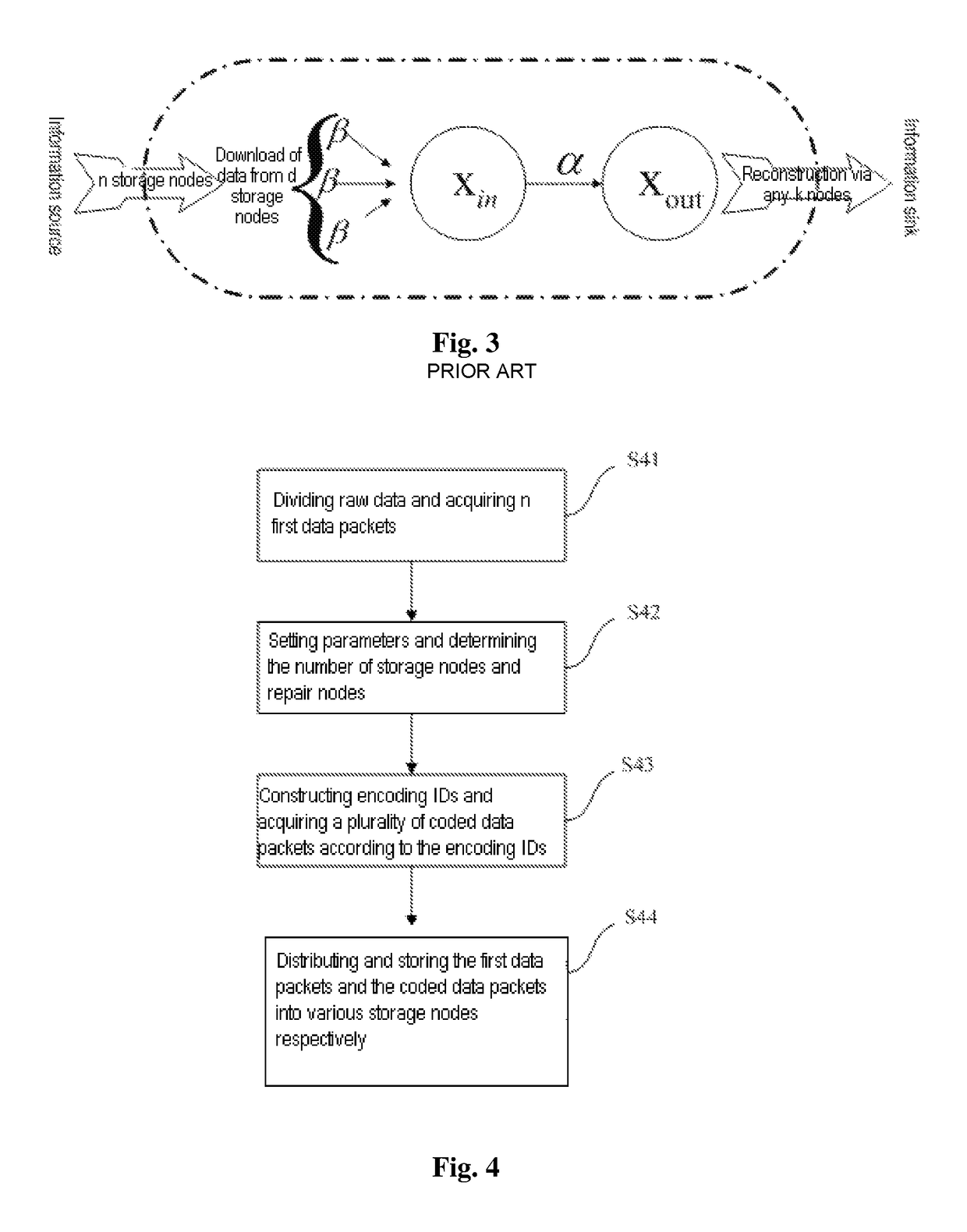Method for encoding MSR (minimum-storage regenerating) codes and repairing storage nodes
a technology of repairing storage nodes and encoding msr, applied in the field of distributed storage, can solve the problems of large amount of network information, large information storage, and traditional file storage systems that cannot meet the requirements of high capacity, high reliability, and high performance, and achieve the effect of improving the overhead required for repairing an encoding fragment, simple computation, and low overhead
- Summary
- Abstract
- Description
- Claims
- Application Information
AI Technical Summary
Benefits of technology
Problems solved by technology
Method used
Image
Examples
Embodiment Construction
[0069]Further description is given to the embodiments of the invention with the attached drawings.
[0070]As illustrated in FIG. 4, in the embodiment of the method for encoding MSR (Minimum-storage Regenerating) codes and repairing storage nodes, the method for encoding the MSR codes comprises the following steps of:
[0071]Step S41: dividing raw data and acquiring n first data packets. In the step, the raw data to be stored on the network is divided into n sections, and the n first data packets are acquired. That is to say, the data length of each first data packet is the same with that of other first data packets. For example, supposing there are 6 characters in the raw data, the simplest method is to divide the raw data into 6 sections and acquire 6 first data packets. Each first data packet has 1 character, with the same data length. Of course, it may be not so simple in the practical application, but the example is enough to illustrate the method for dividing the raw data. In the e...
PUM
 Login to View More
Login to View More Abstract
Description
Claims
Application Information
 Login to View More
Login to View More - R&D
- Intellectual Property
- Life Sciences
- Materials
- Tech Scout
- Unparalleled Data Quality
- Higher Quality Content
- 60% Fewer Hallucinations
Browse by: Latest US Patents, China's latest patents, Technical Efficacy Thesaurus, Application Domain, Technology Topic, Popular Technical Reports.
© 2025 PatSnap. All rights reserved.Legal|Privacy policy|Modern Slavery Act Transparency Statement|Sitemap|About US| Contact US: help@patsnap.com



